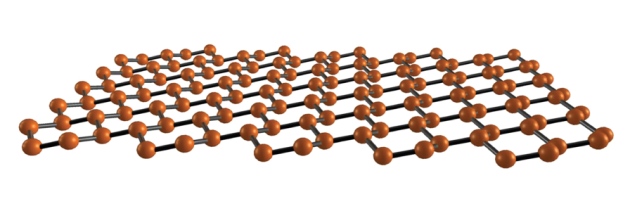This article is more than 1 year old
Silicene takes on graphene as next transistor wonder-stuff
All we need now is a fab
University of Texas boffins have offered up another material they reckon is a hot bet for future generations of Moore's-law-beating super-fast transistors: silicene.
Throwing its hat into the ring as an alternate to the popular wonder-stuff graphene, silicene – a single-atom-thick layer of silicon atoms – is, like graphene, hard to produce. It's also unstable when exposed to air.
That's been a pity for two reasons: silicon is abundant, and the single-atom layers have the kinds of electrical properties chip designers like.
As the university explains, silicene has only recently been fabricated anywhere and never before has it been turned into a transistor.
According to the UoT release, the researchers fabricated their transistors in a vacuum chamber to cut down the exposure to air. In that chamber, a hot vapour of silicon atoms was allowed to condense onto a crystalline block of silver, forming the silicene sheet that was protected with a nanometre-thick layer of alumina (aluminium oxide).
That gave the researchers a film they could peel off its base, silver side uppermost, for transfer to a substrate of oxidised silicon. By scraping off some of the silver, they left two metal electrodes exposed with a strip of silicene between them.

The structure of silicene - University of Texas
The very small size of the structures is what gives the boffins' transistor its low power consumption. Further work will concentrate on creating the kind of fabrication techniques that would let silicene transistors be produced as integrated circuits.
The university's assistant professor Deji Akinwande, who worked with lead researcher Li Tao, said: “Apart from introducing a new player in the playground of 2-D materials, silicene, with its close chemical affinity to silicon, suggests an opportunity in the road map of the semiconductor industry”. ®
